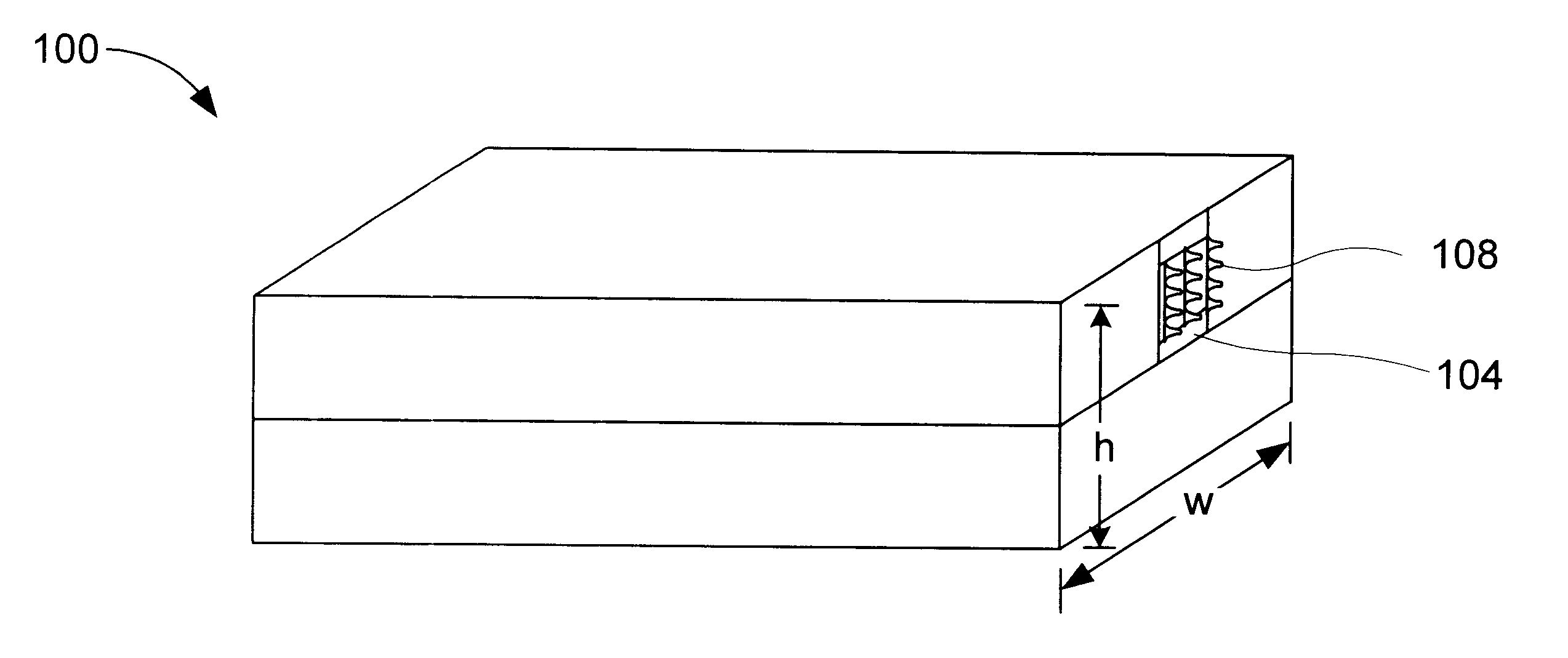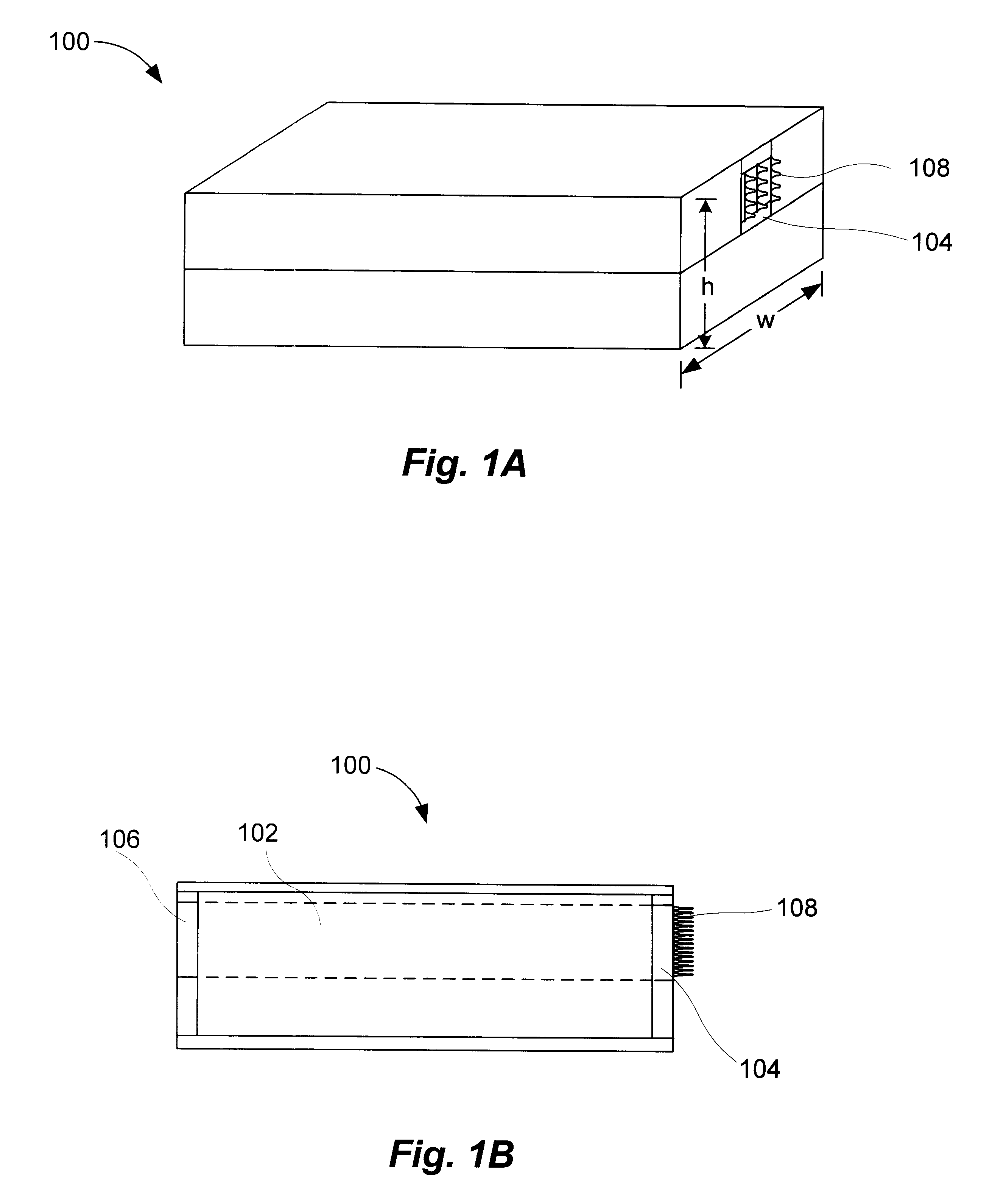Apparatus for light amplification
a technology of apparatus and light, applied in the direction of instruments, semiconductor lasers, optical elements, etc., can solve the problems of spectral output subject to temperature drift, unoptimized output, undesirable lack of monochromity of energy output,
- Summary
- Abstract
- Description
- Claims
- Application Information
AI Technical Summary
Benefits of technology
Problems solved by technology
Method used
Image
Examples
first embodiment
the present invention will be described with reference to FIGS. 1A and 1B. FIG. 1A shows a perspective view of a semiconductor gain device 100 according to an embodiment of the present invention. FIG. 1B shows a cross-section of semiconductor gain device 100. Gain device 100 includes a semiconductor gain medium 102 having a front facet 104 and a rear facet 106. A patterned structure 108 is disposed on front facet 104. An external reflector (shown in FIG. 5), which may be wavelength selective, is typically positioned in front of front facet 104. This reflector in conjunction with the rear facet, defines an optical cavity. Patterned structure 108 may be applied to the facet surface only, as indicated in FIGS. 1A and 1B, or the entire surface structure of the element may be patterned. The entire surface of the facet is the area with height h and width w, as shown in FIG. 1A. In one exemplary embodiment, gain device 100 is a multiquantum well laser, and gain device 100 could operate in ...
PUM
| Property | Measurement | Unit |
|---|---|---|
| Nanoscale particle size | aaaaa | aaaaa |
| Nanoscale particle size | aaaaa | aaaaa |
| Power | aaaaa | aaaaa |
Abstract
Description
Claims
Application Information
 Login to View More
Login to View More - R&D
- Intellectual Property
- Life Sciences
- Materials
- Tech Scout
- Unparalleled Data Quality
- Higher Quality Content
- 60% Fewer Hallucinations
Browse by: Latest US Patents, China's latest patents, Technical Efficacy Thesaurus, Application Domain, Technology Topic, Popular Technical Reports.
© 2025 PatSnap. All rights reserved.Legal|Privacy policy|Modern Slavery Act Transparency Statement|Sitemap|About US| Contact US: help@patsnap.com



